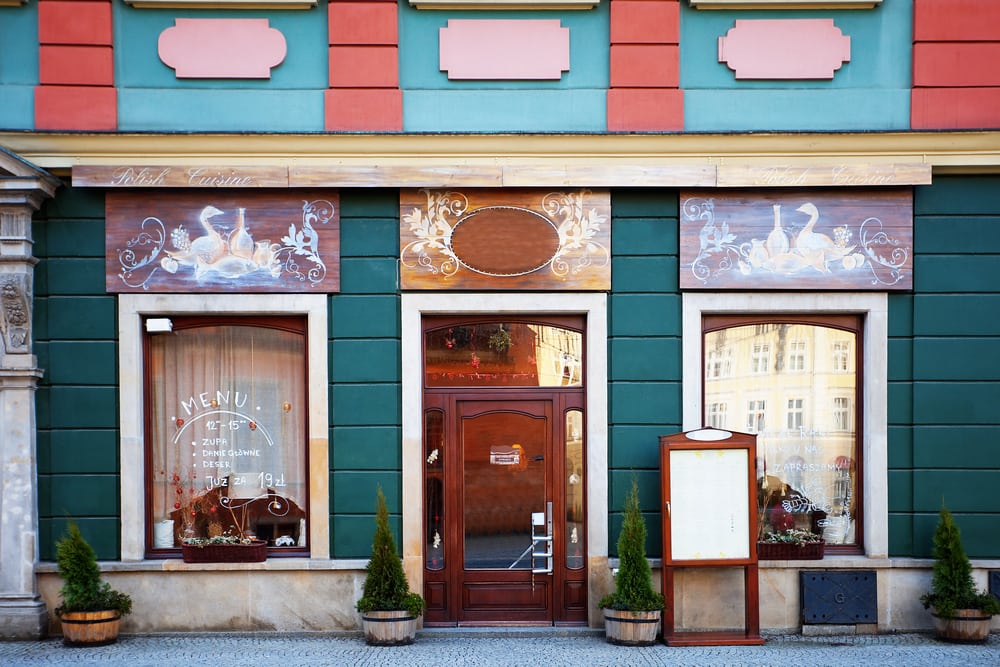Whether you’re opening your very first location or considering a rebranding effort, strong restaurant branding is more crucial to your bottom line than ever.
The good news? Data suggests that the 90 percent failure rate for new restaurants is a persistent myth. In fact, the National Restaurant Association projected as much as $799 billion in sales throughout 2017, or about 4 percent of the U.S. GDP. And the trends are still looking up.
But new restaurants still face common challenges and pitfalls. A weak concept, bad location, mismanagement, or simply restaurant branding ideas that suffer from poor execution can all translate to lackluster sales. Even if a restaurant has a recognizable logo or a catchy tagline, failure to understand what drives customers can create roadblocks to success.
Ultimately, restaurant branding is about more than creating a strong visual identity or a memorable dining experience for your customers. It’s about understanding exactly who you are as a company—and why diners make their reservations at your restaurant, rather than with your competitor across town.
Strong restaurant branding efforts will affect everything from customer loyalty to your ability to expand into a regional or national franchise. And while how you target your customers might change over time, finding strategies to show your diners who you are as a company will help you stand out from the crowd for years to come.
Here’s everything you need to know in order to master the basics of restaurant branding—and turn your concept for a restaurant into a full-fledged branding strategy.
7 Tips for Building Your Restaurant’s Brand Identity
1. Understand your company values
If you have a clear understanding of who you are as a company, it’s easier to identify your ideal customer and their needs.
Are you a fast-casual sandwich shop that only uses local, organic produce because you value fresh ingredients and supporting your local economy? Or are you a fine dining establishment that infuses regional cooking with French cuisine because you value innovation in the kitchen?
Whatever your core values may be, they’ll form the foundation of your restaurant branding efforts—and help you effectively target the right customers. Your stated values or company mission will affect every decision, from the look and feel of your restaurant to the voice of your advertising copy. Start there.
2. Know your audience
One of the most important components of successful restaurant branding is understanding your audience and their behavior. Who are your regular customers? What do they value? Why do they choose your restaurant over a competitor’s?
In order to better understand your audience, conduct market research on your target demographic. If you’re on a tight budget, this can be as simple as surveying potential customers about their tastes, preferences, schedule, and needs.
Professional market research can help you develop a detailed customer profile with data that helps you feel confident in decision-making. After all, everything from your location to your menu is deeply affected by understanding and serving your potential customers.
As marketing technology becomes more accessible, restaurants have the opportunity to collect their own customer data through point of sale software, too. Customer data will form the bedrock of your marketing strategy, allowing you to personalize outreach and develop a loyal customer base.
Remember: restaurant branding ideas begin with a hunch—but they should be supported by reliable customer data. Have a plan for the data you collect—and use it to surprise and delight your customers, so they keep coming back for more.
3. Position yourself in the market
Use the market research on your potential customer base to position yourself successfully in your market. How do you add something new to the fast-casual Italian space? What makes you different from other Indian buffets?
According to Molly St. Louis, a brand consultant and contributor to both Inc. and Adweek, competitor research is just as important as understanding your demographic.
“[An] in-depth competitor analysis—including a review of competitor websites, search engine optimization, brand identities, and advertising—informs who [a brand] will compete with for market share, how to differentiate, and what strategies to employ,” St. Louis writes at Inc.
Articulating what sets your restaurant apart will also help you develop marketing and branding ideas that break through to your customers, so you become a memorable fixture of their day-to-day lives.
You want all of your visual cues and written communications to help customers understand the benefits of dining at your restaurant, rather than at a competitor’s establishment—and you can only do this if you position yourself before diving into visual identity.
4. Choose the right name
What’s in a name? Often it’s the difference between a successful restaurant branding effort and an unsuccessful one. But don’t get caught up in trying to outdo your competition by following in their footsteps, warns Julia Beebe, a marketing expert for Toast.
“Just because all of your Greek fast-casual competitors use a pun in their name, design their restaurants with the Greek Isles in mind, and utilize the color blue doesn’t mean that’s what their audience cares about,” explains Beebe at the Toast blog.
“Just because a lot of your competitors are doing something similar doesn’t mean it’s right,” she adds.
The better you understand what your customer wants and needs from their dining experience—and why they choose you—the easier it will be to establish a visual brand identity that appeals to your target demographic.
5. Be consistent in your design
When we think of restaurant branding, it’s easy to fixate on visual design cues, including your logo, website, menu, and the interior design of your space. But the design should reflect the hard work you’ve done positioning your restaurant and developing a solid branding strategy. Without understanding your company’s values or your customer’s needs, flashy branding won’t mean a thing.
Aside from developing a strong visual brand identity with a graphic designer or branding team, make a plan for using the identity consistently on each of your platforms. If you have a different logo on your menu than on your website, for example, it could confuse your customers. Are you the same business they looked up online? Consistency is key.
6. Invest in customer service strategy and training
Restaurants are a service industry, which means your brand identity relies heavily on how you plan to align your customer service with your company values. Everything from online ordering to the on-site dining experience should reflect who you are as a company.
If your brand highlights farm-to-table freshness and sustainability, for example, you’ll want to ensure everyone from your servers to your hostesses can field questions about where your food is grown—and that your delivery and take-out packaging is recyclable or, better yet, compostable. These details create a narrative about who you are as a brand, fostering trust and loyalty in your customers.
To a large extent, the customer’s experience of your restaurant is your brand. Create a plan to make customer experiences consistent across all of your touchpoints. Does the customer who places an order online have the same great customer service experience as one who dines in? What about the customer who calls your restaurant, versus one who asks a question on Facebook? Every platform should deliver the same brand experience and voice to your customers.
7. Take the time to analyze your data—and roll with the punches
Your restaurant’s brand identity is a blueprint that outlines the values of your company and your ideal customer. But that doesn’t mean the details of your business will stay static. For example, you might find that a demographic you didn’t identify in your initial brand strategy is drawn to your restaurant. How will you target them in future advertising efforts? How will you make them feel welcome in your space, especially if they’re providing you with a nice revenue bump?
Ultimately, restaurant branding ideas are just that—ideas. Starting points. The real work—and sometimes the most exciting work—comes from paying attention to how your customers respond to your marketing efforts and taking calculated risks to reach them more effectively.
Ask yourself:
- Do your customers trust your brand?
- Do they turn to you whenever they need, say, the best Italian catering in San Francisco?
- How can you use the data you’ve collected to improve the experience of your diners?
- How can you use the data to fill up more tables at the beginning of the week?
- How can you capture more feedback from your diners in a way that might cultivate trust and loyalty?
While a strong restaurant branding and strategy can provide you with ideas for marketing directly to your ideal customers, strategies aren’t meant to last forever. As you gather data on everything from your customers to the best dishes on your menu, be ready to change your marketing strategy to better address the needs and concerns of your customers.
Need more marketing ideas for your restaurant?










